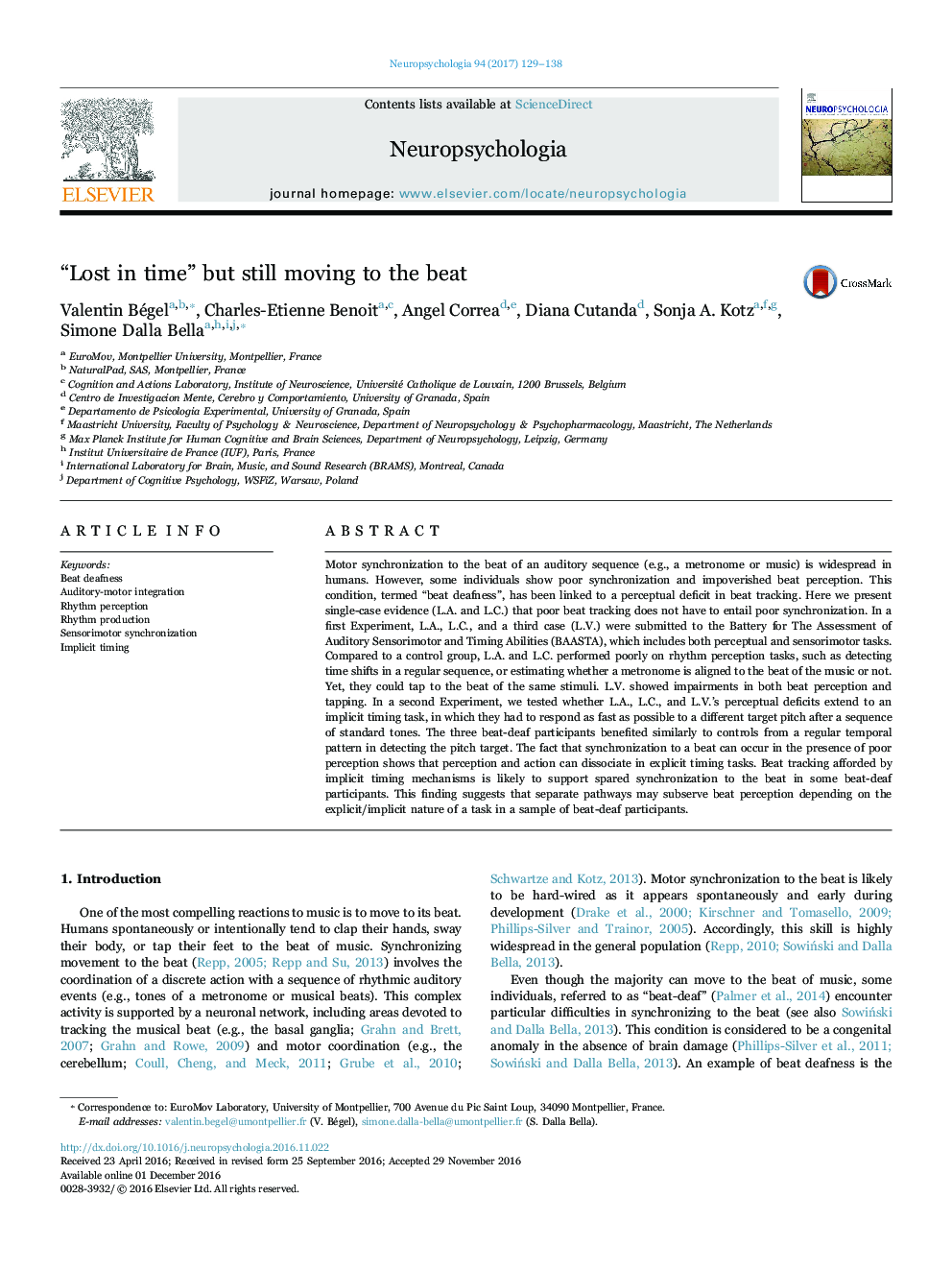| کد مقاله | کد نشریه | سال انتشار | مقاله انگلیسی | نسخه تمام متن |
|---|---|---|---|---|
| 5045260 | 1475561 | 2017 | 10 صفحه PDF | دانلود رایگان |

- Some people cannot perceive the rhythm of music but can still move to its beat.
- They can process temporal regularity when they do not pay attention to the rhythm.
- Implicit perception of rhythm may support motor synchronization to the beat.
Motor synchronization to the beat of an auditory sequence (e.g., a metronome or music) is widespread in humans. However, some individuals show poor synchronization and impoverished beat perception. This condition, termed “beat deafness”, has been linked to a perceptual deficit in beat tracking. Here we present single-case evidence (L.A. and L.C.) that poor beat tracking does not have to entail poor synchronization. In a first Experiment, L.A., L.C., and a third case (L.V.) were submitted to the Battery for The Assessment of Auditory Sensorimotor and Timing Abilities (BAASTA), which includes both perceptual and sensorimotor tasks. Compared to a control group, L.A. and L.C. performed poorly on rhythm perception tasks, such as detecting time shifts in a regular sequence, or estimating whether a metronome is aligned to the beat of the music or not. Yet, they could tap to the beat of the same stimuli. L.V. showed impairments in both beat perception and tapping. In a second Experiment, we tested whether L.A., L.C., and L.V.'s perceptual deficits extend to an implicit timing task, in which they had to respond as fast as possible to a different target pitch after a sequence of standard tones. The three beat-deaf participants benefited similarly to controls from a regular temporal pattern in detecting the pitch target. The fact that synchronization to a beat can occur in the presence of poor perception shows that perception and action can dissociate in explicit timing tasks. Beat tracking afforded by implicit timing mechanisms is likely to support spared synchronization to the beat in some beat-deaf participants. This finding suggests that separate pathways may subserve beat perception depending on the explicit/implicit nature of a task in a sample of beat-deaf participants.
Journal: Neuropsychologia - Volume 94, 8 January 2017, Pages 129-138